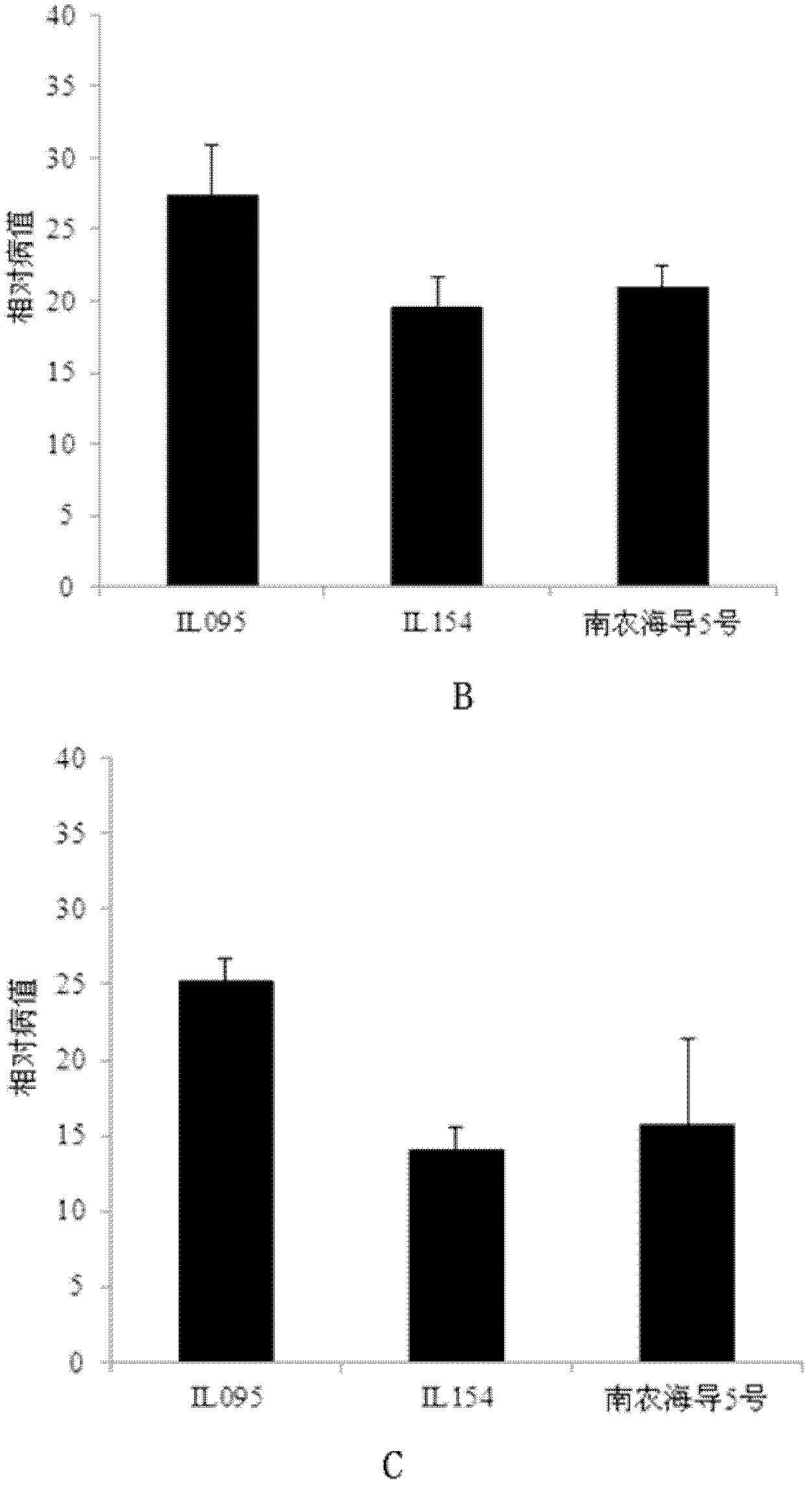Molecular breeding method for breeding new anti-verticillium cotton seed
A technology for molecular breeding and resistance to Verticillium wilt, applied in the fields of botanical equipment and methods, biochemical equipment and methods, and microbial assay/inspection, etc. , to achieve the effect of long breeding cycle and poor selection reliability
- Summary
- Abstract
- Description
- Claims
- Application Information
AI Technical Summary
Problems solved by technology
Method used
Image
Examples
Embodiment 1
[0022] Embodiment 1 selects parents
[0023]The Cotton Research Institute of the State Key Laboratory of Crop Genetics and Germplasm Innovation of Nanjing Agricultural University uses the genetic standard line TM-1 of upland cotton as the recurrent parent, and the disease-resistant and high-quality Sea Island Mianhai 7124 line as the donor parent (non-recurrent parent). Combined with the SSR molecular marker-assisted selection covering the whole genome, the first domestic upland cotton genetic standard line TM-1 background 174 sea-island cotton chromosome segment introduction lines were bred, and the genome coverage rate reached 83.5%. Verticillium wilt strains V991 and V07DF2 are two deciduous strains with different pathogenicity in the Yangtze River cotton region (the strains are preserved by the Institute of Plant Protection, Jiangsu Academy of Agricultural Sciences), and Verticillium wilt strain D8092 is a medium pathogenic strain in the Yellow River cotton region. Deciduo...
Embodiment 2
[0025] (1) In the summer of 2008, a row of IL095 and IL154 were planted at the Jiangpu Experimental Station of Nanjing Agricultural University. IL095 (CGMCC NO.5574) was used as the female parent and IL154 (CGMCC NO.5575) was used as the male parent to prepare a hybrid combination to produce F 1 , all mixed harvest after maturity. Planting 3 rows of F in Sanya, Hainan in the winter of 2008 1 , selfing to obtain F 2 , all mixed harvest after maturity. Field management was carried out by conventional methods.
[0026] (2) Molecular marker-assisted selection: In the summer of 2009, 50 rows of F 2 , 10-12 plants per line, 3-4 unexpanded leaves were collected from each plant and put into a 1.5ml eppendorf tube, and 600 μl of pre-cooled freshly prepared extraction buffer was added, ground with an electric drill, and CTAB method (Paterson AH , Brubaker CL, Wendel JF. A rapid method for extraction of cotton (Gossypium spp.) genomic DNA suitable for RFLP or PCR analysis [J]. Plant ...
PUM
 Login to View More
Login to View More Abstract
Description
Claims
Application Information
 Login to View More
Login to View More - R&D
- Intellectual Property
- Life Sciences
- Materials
- Tech Scout
- Unparalleled Data Quality
- Higher Quality Content
- 60% Fewer Hallucinations
Browse by: Latest US Patents, China's latest patents, Technical Efficacy Thesaurus, Application Domain, Technology Topic, Popular Technical Reports.
© 2025 PatSnap. All rights reserved.Legal|Privacy policy|Modern Slavery Act Transparency Statement|Sitemap|About US| Contact US: help@patsnap.com



